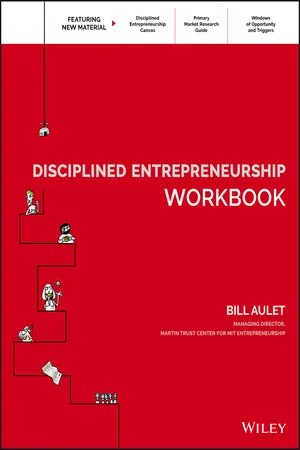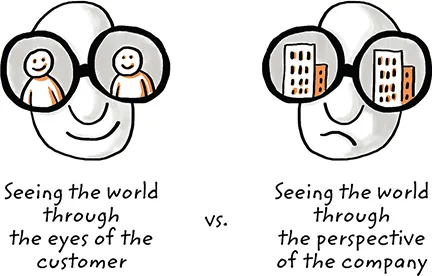
- English
- ePUB (mobile friendly)
- Available on iOS & Android
Disciplined Entrepreneurship Workbook
About this book
The essential companion to the book that revolutionized entrepreneurship
Disciplined Entrepreneurship Workbook provides a practical manual for working the 24-step framework presented in Disciplined Entrepreneurship. Unlocking key lessons and breaking down the steps, this book helps you delve deeper into the framework to get your business up and running with a greater chance for success. You'll find the tools you need to sharpen your instinct, engage your creativity, work through hardship, and give the people what they want—even if they don't yet know that they want it. Real-world examples illustrate the framework in action, and case studies highlight critical points that can make or break you when your goal is on the line. Exercises and assessments help you nail down your strengths, while pointing out areas that could benefit from reinforcement—because when it comes to your business, "good enough" isn't good enough— better is always better.
Disciplined Entrepreneurship transformed the way that professionals think about starting a company, and this book helps you dig into the proven framework to make your business dreams a reality.
- Delve deeper into the 24 steps to success
- Innovate, persevere, and create the product people want
- Internalize lessons learned from real-world entrepreneurs
- Test your understanding with exercises and case studies
The book also includes new material on topics the author has found to be extremely useful in getting the most value out of the framework including Primary Market Research, Windows of Opportunity and Triggers. The book also introduces the Disciplined Entrepreneurship Canvas to track your progress on this journey.
Starting a company is a serious undertaking, with plenty of risk and sacrifice to go around—so why not minimize the risk and make the outcome worth the sacrifice? Author Bill Aulet's 24-step framework is proven to build a successful business; the key is in how well you implement it. Disciplined Entrepreneurship Workbook helps you master the skills, tools, and mindset you need to get on your path to success.
Frequently asked questions
- Essential is ideal for learners and professionals who enjoy exploring a wide range of subjects. Access the Essential Library with 800,000+ trusted titles and best-sellers across business, personal growth, and the humanities. Includes unlimited reading time and Standard Read Aloud voice.
- Complete: Perfect for advanced learners and researchers needing full, unrestricted access. Unlock 1.4M+ books across hundreds of subjects, including academic and specialized titles. The Complete Plan also includes advanced features like Premium Read Aloud and Research Assistant.
Please note we cannot support devices running on iOS 13 and Android 7 or earlier. Learn more about using the app.
Information
STEP 1
Market Segmentation
WHAT IS STEP 1, MARKET SEGMENTATION?
WHY DO WE DO THIS STEP, AND WHY DO WE DO IT NOW?

PROCESS GUIDE
Table of contents
- Cover
- Title page
- Copyright
- Dedication
- Preface
- Introducing the Disciplined Entrepreneurship Canvas
- Step 0 How Do I Get Started? Should I?
- Step 1 Market Segmentation
- Bonus Topic A Practical Guide to Primary Market Research
- Step 2 Select a Beachhead Market
- Step 3 Build an End User Profile for the Beachhead Market
- Step 4 Estimate the Total Addressable Market (TAM) for the Beachhead Market
- Step 5 Profile the Persona for the Beachhead Market
- Step 6 Full Life Cycle Use Case
- Step 7 High-Level Product Specification
- Step 8 Quantify the Value Proposition
- Step 9 Identify Your Next 10 Customers
- Step 10 Define Your Core
- Step 11 Chart Your Competitive Position
- Step 12 Determine the Customer’s Decision-Making Unit (DMU)
- Step 13 Map the Process to Acquire a Paying Customer
- Bonus Topic Windows of Opportunity and Triggers
- Step 14 Estimate the Total Addressable Market (TAM) Size for Follow-on Markets
- Step 15 Design a Business Model
- Step 16 Set Your Pricing Framework
- Step 17 Estimate the Lifetime Value (LTV) of an Acquired Customer
- Step 18 Map the Sales Process to Acquire a Customer
- Step 19 Estimate the Cost of Customer Acquisition (COCA)
- Step 20 Identify Key Assumptions
- Step 21 Test Key Assumptions
- Step 22 Define the Minimum Viable Business Product (MVBP)
- Step 23 Show That “The Dogs Will Eat the Dog Food”
- Step 24 Develop a Product Plan
- Beyond the 24 Steps
- Exercise Answers
- Index
- EULA